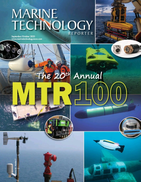Threat from wandering greenhouse gas
On the seafloor of the shallow coastal regions north of Siberia, microorganisms produce methane when they break down plant remains. If this greenhouse gas finds its way into the water, it can also become trapped in the sea ice that forms in these coastal waters. As a result, the gas can be transported thousands of kilometres across the Arctic Ocean and released in a completely different region months later. This phenomenon is the subject of an article by researchers from the Alfred Wegener Institute, published in the current issue of the online journal Scientific Reports. Although this interaction between methane, ocean and ice has a significant influence on climate change, to date it has not been reflected in climate models.
In August 2011, the icebreaker Polarstern from the Alfred Wegener Institute, Helmholtz Centre for Polar and Marine Research (AWI) was making its way through the ice-covered Arctic Ocean, on a course that took her just a few hundred kilometres from the North Pole. Back then, AWI geochemist Dr Ellen Damm tested the waters of the High North for the greenhouse gas methane. In an expedition to the same region four years later, she had the chance to compare the measurements taken at different times, and found significantly less methane in the water samples.
Ellen Damm, together with Dr Dorothea Bauch from the GEOMAR Helmholtz Centre for Ocean Research in Kiel and other colleagues, analysed the samples to determine the regional levels of methane, and the sources. By measuring the oxygen isotopes in the sea ice, the scientists were able to deduce where and when the ice was formed. To do so, they had also taken sea-ice samples. Their findings: the ice transports the methane across the Arctic Ocean. And it appears to do so differently every year, as the two researchers and their colleagues from the AWI, the Finnish Meteorological Institute in Helsinki and the Russian Academy of Science in Moscow relate in the online journal Scientific Reports.
The samples from 2011 came from sea ice that had started its long journey north in the coastal waters of the Laptev Sea of eastern Siberia nearly two years earlier, in October 2009. The samples from 2015, which had only been underway in the Arctic Ocean half as long, showed a markedly lower level of the greenhouse gas. The analysis revealed that this ice was formed much farther out, in the deeper ocean waters. However, until now, the climate researchers’ models haven’t taken into consideration the interaction between methane, the Arctic Ocean and the ice floating on it.
Every molecule of methane in the air has 25 times the effect on temperature rise compared to a molecule of carbon dioxide released into the atmosphere by burning coal, oil or gas. Methane in the Arctic also has an enormous impact on warming at northerly latitudes, and further exacerbates global warming – a good reason to investigate the methane cycle in the High North more closely.
Methane is produced by cattle breeding and rice cultivation, as well as various other natural processes. For example, the remains of algae and other plant materials collect on the floor of the shallow Laptev Sea, and in other shallow waters off the Arctic coast. If there is no oxygen there, microorganisms break down this biomass, producing methane. To date, simulations have paid too little attention to the routes of by carbon and release of methane from the Arctic regions.
In autumn, when air temperatures drop, many areas of open water also begin to cool. “Sea ice forms on the surface of the Russian shelf seas, and is then driven north by the strong winds,” explains AWI sea-ice physicist Dr Thomas Krumpen, who also took part in the study. The ice formation and offshore winds produce strong currents in these shallow marginal seas, which stir up the sediment and carry the methane produced there into the water column. The methane can also be trapped in the ice that rapidly forms in these open areas of water – also known as polynya – in the winter.
“As more seawater freezes it can expel the brine contained within, entraining large quantities of the methane locked in the ice,” explains AWI researcher Ellen Damm. As a result, a water-layer is formed beneath the ice that contains large amounts of both salt and methane. Yet the ice on the surface and the dense saltwater below, together with the greenhouse gas it contains, are all pushed on by the wind and currents. According to Thomas Krumpen, “It takes about two and a half years for the ice formed along the coast of the Laptev Sea to be carried across the Arctic Ocean and past the North Pole into the Fram Strait between the east cost of Greenland and Svalbard.” Needless to say, the methane trapped in the ice and the underlying saltwater is along for the ride.
The rising temperatures produced by climate change are increasingly melting this ice. Both the area of water covered by sea ice and the thickness of the ice have been decreasing in recent years, and thinner ice is blown farther and faster by the wind. “In the past few years, we’ve observed that ice is carried across the Arctic Ocean faster and faster,” confirms Thomas Krumpen. And this process naturally means major changes in the Arctic’s methane turnover. Accordingly, quantifying the sources, sinks and transport routes of methane in the Arctic continues to represent a considerable challenge for the scientific community.

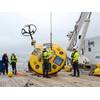

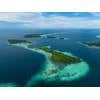


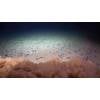








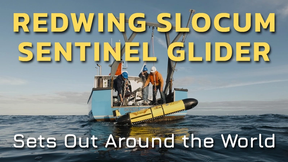
 August 2025
August 2025


